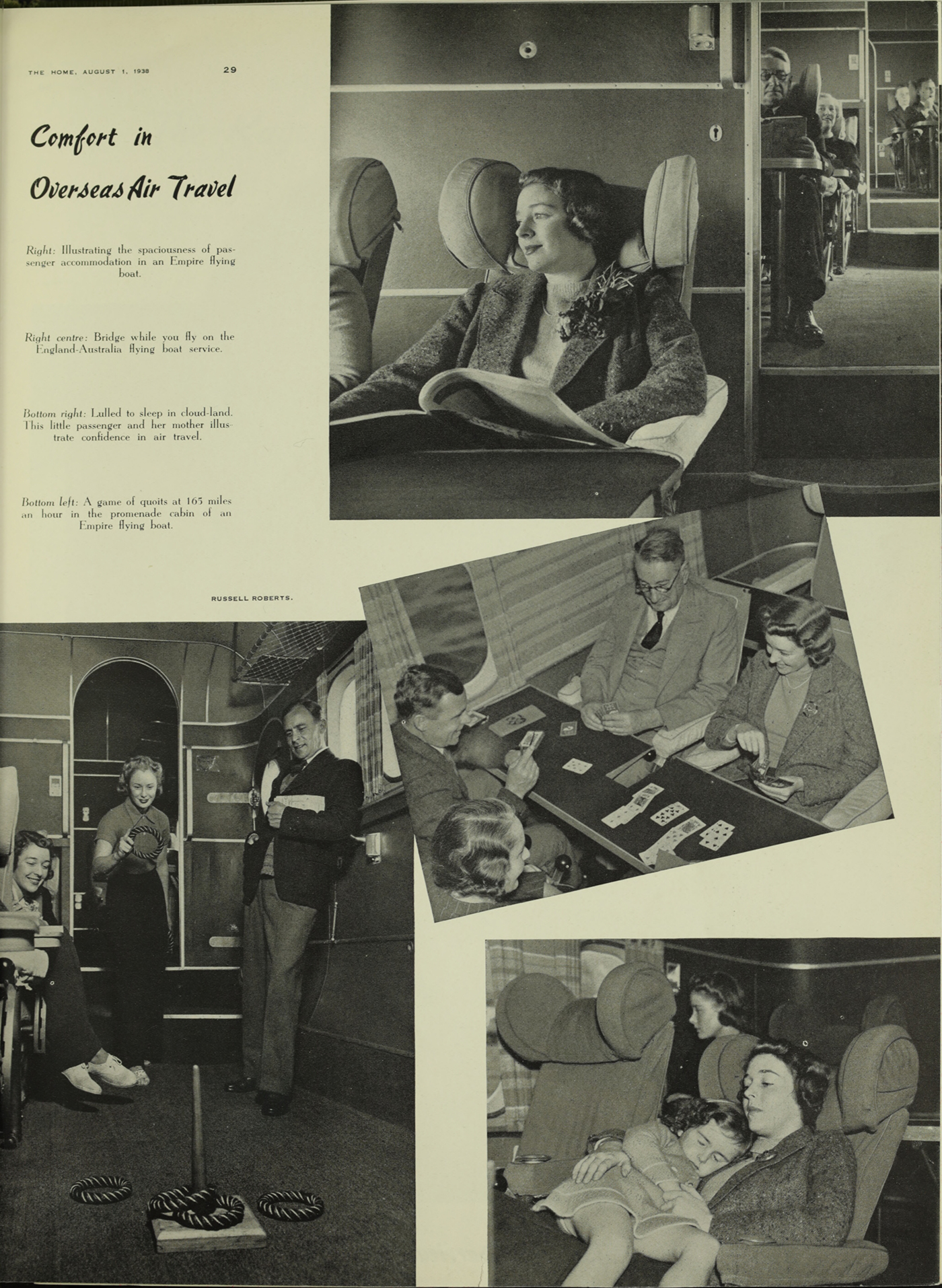The Dictionary of Sydney was archived in 2021.
Rose Bay Airport
 Short Empire Flying Boat Cooee at Rose Bay 5 July 1939, courtesy Mitchell Library, State Library of NSW (ON 388/Box 035/Item 119, ACP Magazines)
Short Empire Flying Boat Cooee at Rose Bay 5 July 1939, courtesy Mitchell Library, State Library of NSW (ON 388/Box 035/Item 119, ACP Magazines)
 Comfort in Overseas Air Travel, The Home, August 1938, p29
Comfort in Overseas Air Travel, The Home, August 1938, p29
 2SER is celebrating it's 40th anniversary this month. ’40 Years of 2SER’, a free interactive exhibition exploring the stations four decades of broadcast will be on at 107 Projects in Redfern from the 10 – 20 October. Head to the 2SER website for further details about the anniversary and the exhibition .
2SER is celebrating it's 40th anniversary this month. ’40 Years of 2SER’, a free interactive exhibition exploring the stations four decades of broadcast will be on at 107 Projects in Redfern from the 10 – 20 October. Head to the 2SER website for further details about the anniversary and the exhibition .
Mark Dunn is the former Chair of the NSW Professional Historians Association and former Deputy Chair of the Heritage Council of NSW. He is currently a Visiting Scholar at the State Library of NSW. You can read more of his work on the Dictionary of Sydney here. Mark appears on 2SER on behalf of the Dictionary of Sydney in a voluntary capacity. Thanks Mark!
Listen to the audio of Mark & Tess here, and tune in to 2SER Breakfast with Tess Connery on 107.3 every Wednesday morning at 8:15 to hear more from the Dictionary of Sydney. Visit the State Library of New South Wales for the 2019 Open Day on Saturday 12 October and enjoy a full day of fun activities, talks and tours for the whole family. Head to the Library website for the full program of events.
Visit the State Library of New South Wales for the 2019 Open Day on Saturday 12 October and enjoy a full day of fun activities, talks and tours for the whole family. Head to the Library website for the full program of events.
Categories
Blog
2SER Breakfast
Ansett
aviation history
Catalina
Flying Boats
Mark Dunn
Qantas
Rose Bay Airport
Seaplanes
sydney history
Tess Connery
transport

